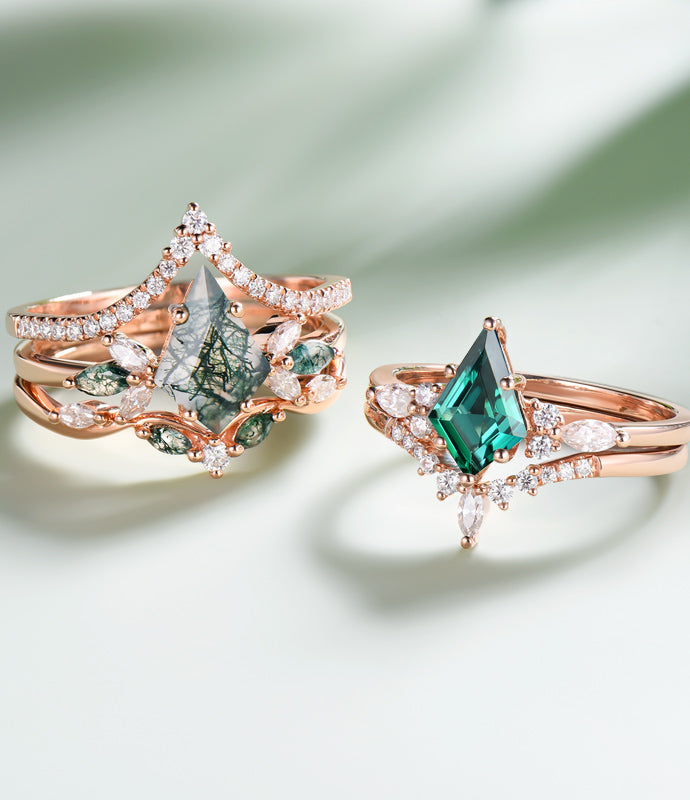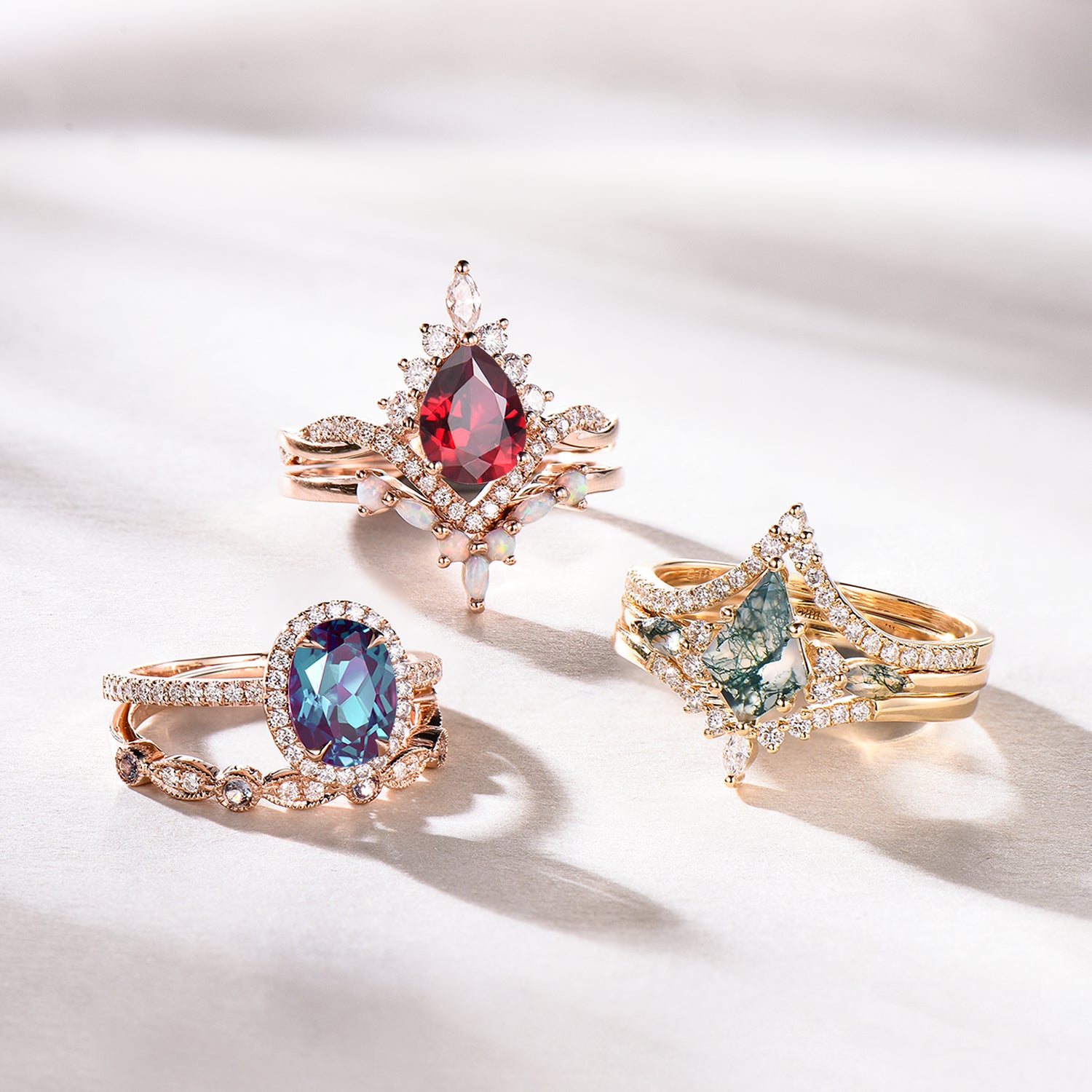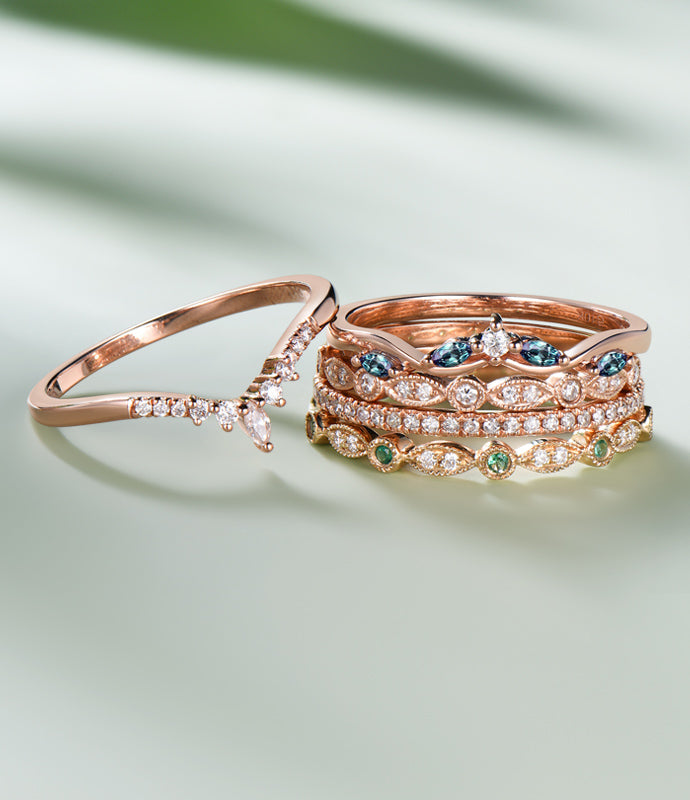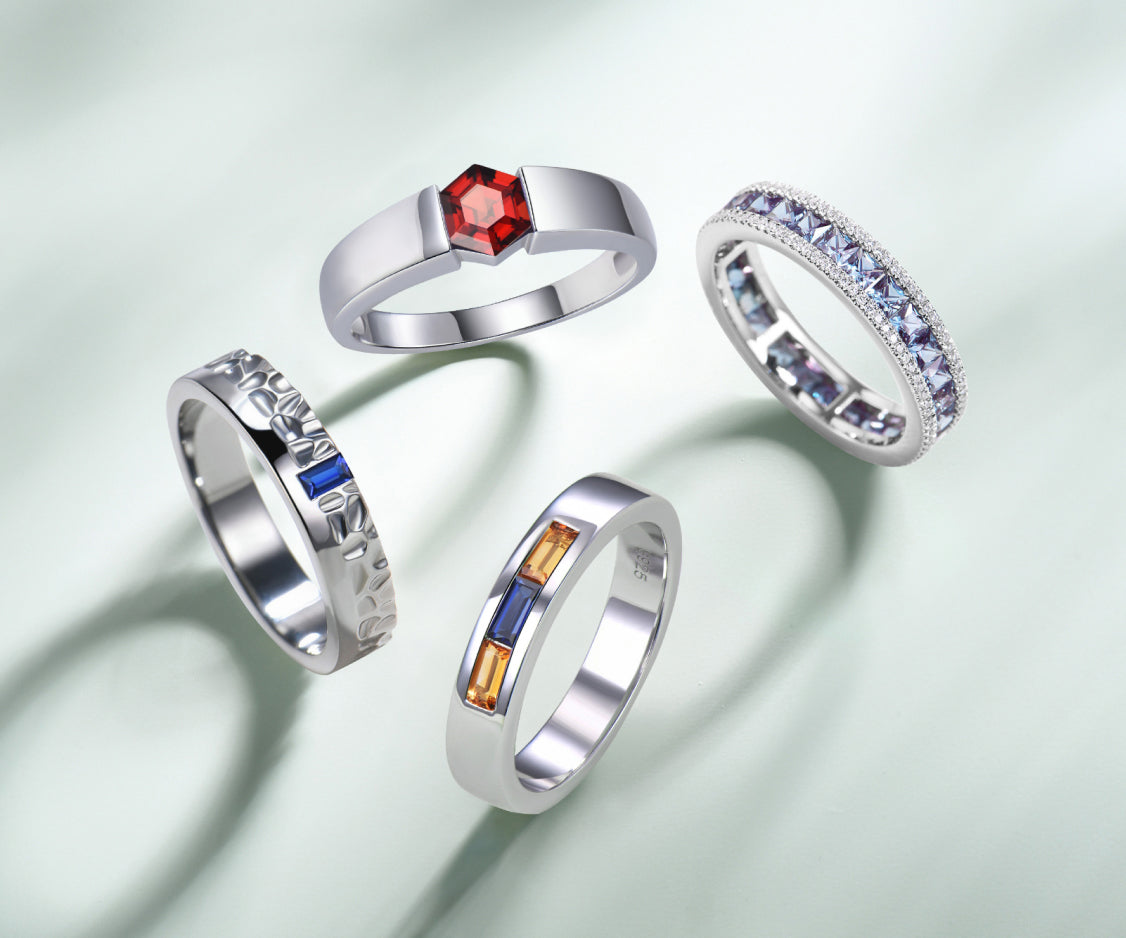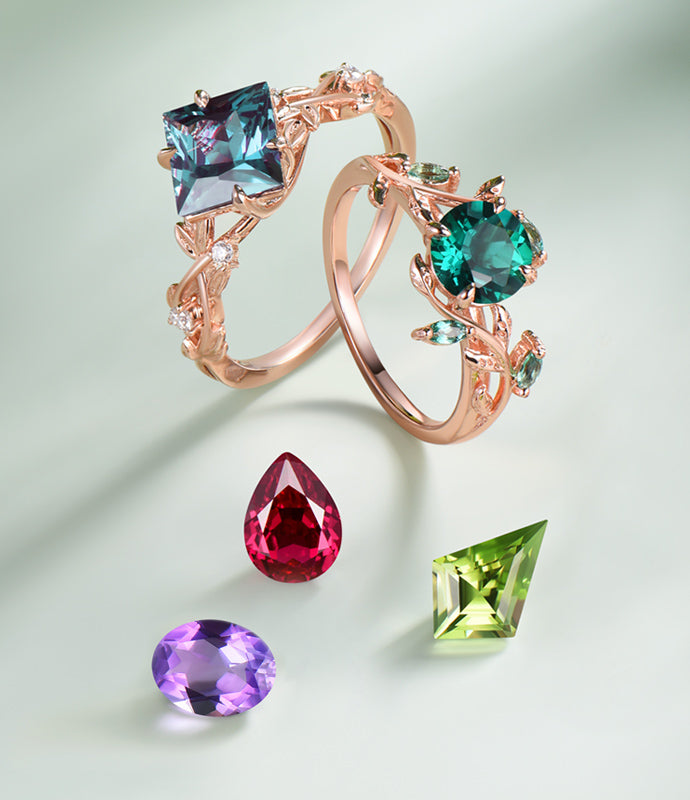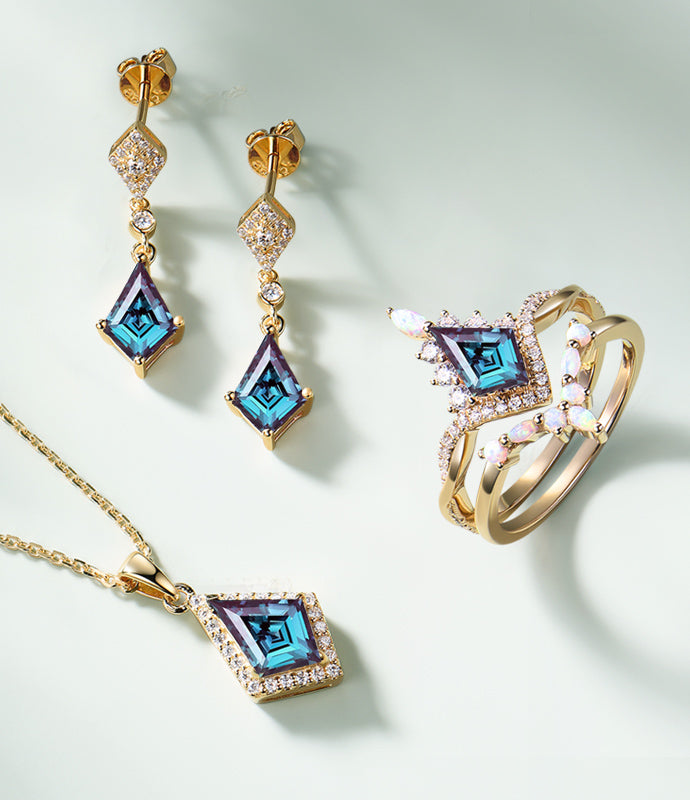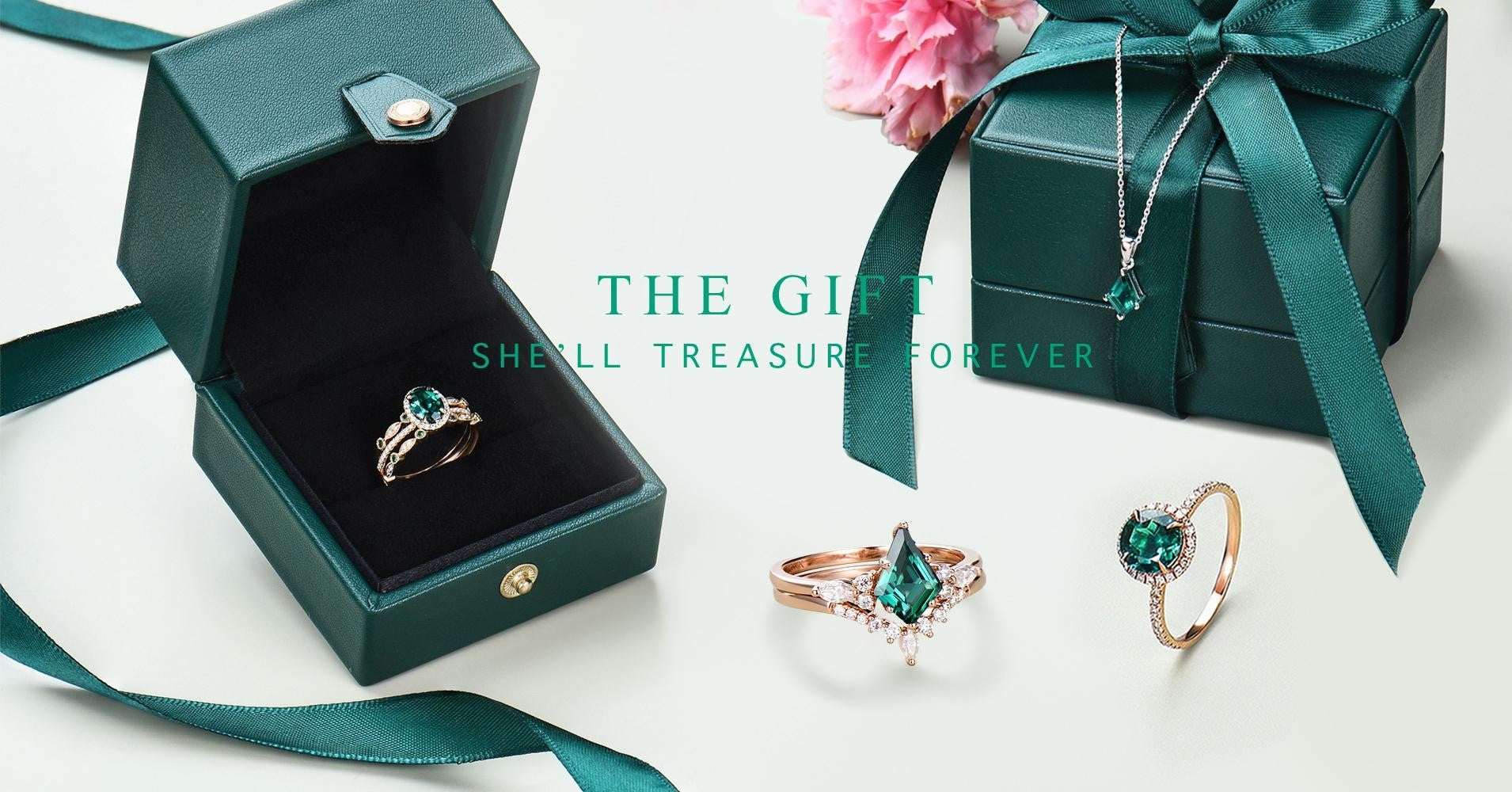Lab Created Emerald: An Ideal Substitute for Natural Emerald
Emeralds have historically been valued for their vivid green hue, symbolizing renewal and fresh starts. These gemstones are also emblematic of fidelity and the strength of relationships. It is therefore unsurprising that emeralds are a favored choice for engagement and anniversary jewelry. However, the acquisition of natural emeralds can be prohibitively expensive, and these gemstones often contain natural imperfections. For those who are budget-conscious or seeking a flawless alternative, lab-created emeralds present a viable option.
Synthetically produced emeralds replicate the allure of their natural counterparts while being significantly more affordable. As these emeralds are cultivated in controlled conditions, they generally lack the inclusions typical of natural stones. If you are in search of a substitute for natural emeralds, lab-created emeralds merit consideration. They are equally captivating and more economically accessible than natural emeralds.
For those in pursuit of bespoke emerald jewelry, such as necklaces or earrings, our service offers personalized design solutions. Our team of seasoned designers is committed to working collaboratively with clients to craft unique and stylish pieces, tailored to individual preferences.
What Makes Emerald So Unique?
Emeralds have been esteemed by various civilizations globally for centuries, standing as some of the most time-honored gemstones known. The earliest emeralds date back an astonishing 2.97 billion years, marking them as among the oldest gemstones discovered.
In the annals of history, the Egyptians were among the earliest to extract emeralds. Queen Cleopatra, an iconic historical figure, was famously enamored with these exquisite stones. In Egypt, emeralds were frequently incorporated into jewelry and burial artifacts, with Cleopatra declaring exclusive control over the emerald mines throughout her reign.
Concurrently, across the globe in Colombia, the Muzo Indians held emeralds in high regard, ingeniously concealing their mines. This effective concealment resulted in the Spanish conquistadors taking several years to locate these precious resources.
In contemporary times, emeralds continue to be revered as symbols of elegance, opulence, and influence.
What Is a Lab-Created Emerald?
Emeralds have long been a hallmark of exquisite and timeless jewelry. While naturally mined emeralds have enjoyed centuries of admiration, the jewelry market has welcomed an innovative addition: lab-grown emeralds. These synthetic gems are produced under conditions that mimic those in nature, using the same constituent materials as natural emeralds, but within a significantly shorter time span. But what precisely defines a lab-grown emerald?
Also known as lab-created emeralds rings, lab emeralds, or created emeralds, these stones are exactly as their name implies: emeralds cultivated in laboratory settings. Both natural and lab-grown emeralds are derivatives of the mineral beryl and are indistinguishable in chemical and optical properties. The primary distinction between them lies in their respective origins
Typically, mined emeralds bear minor gas bubbles and mineral traces, remnants of their natural crystallization journey. In contrast, lab-created emeralds exhibit fewer inclusions, with some even approaching a near-flawless state.
For those seeking a piece of jewelry that combines classic beauty with purity and brilliance, a lab-grown emerald presents an ideal option.
Is a Lab-Created Emerald a Real Emerald?
It is common to perceive naturally mined emeralds as the definitive "real" emeralds. However, the classification of a gemstone as an emerald is determined by its composition of beryllium, aluminum, silicon, and oxygen, irrespective of its origin. Thus, synthetic or lab-created emeralds are equally authentic as their natural counterparts.
Both varieties of emeralds, natural and synthetic, share identical physical and chemical characteristics. They possess similar hardness, ranking between 7.5 and 8 on the Mohs scale, exhibit comparable specific gravity, and refract light in analogous manners. The primary distinction between them is their source: natural emeralds are extracted from the earth, whereas synthetic emeralds are meticulously crafted in laboratories.
Therefore, in deliberating whether a synthetic emerald is "real," one can be confident that it is. Synthetic emeralds retain all the defining properties of natural emeralds; their divergence lies solely in their respective origins.
How Much Is Lab-Created Emerald Worth?
The invention of lab-created emeralds is regarded as a notable achievement in human ingenuity. Authentic gemstones can fetch prices ranging from $40,000 to $100,000 per carat, placing them beyond the reach of many. In contrast, high-quality synthetic emeralds can be acquired for less than $300 per carat, making them a more accessible option for a broader audience.
These lab-grown gems offer an attractive combination of affordability and beauty. One of the key advantages of lab-created emeralds is their durability, along with their possession of the aesthetic and physical properties of natural emeralds. While they require less maintenance, standard care for jewelry is still recommended. Therefore, for those seeking both beauty and affordability in jewelry, lab-created emeralds present an ideal choice.
Are Lab-Created Emeralds More Durable Than Natural Emeralds?
Lab-grown emeralds have gained considerable popularity in recent years as a cost-effective substitute for traditionally mined emeralds. Yet, questions arise regarding the durability and strength of these synthetic stones compared to their natural equivalents.
Emeralds, in comparison to other sought-after gemstones such as diamonds and sapphires, are inherently softer. This characteristic renders them more vulnerable to damage like chipping and scratching. Herein lies the notable advantage of lab-created emeralds.
The controlled conditions of laboratory creation allow for the production of emeralds with fewer internal fractures and enhanced clarity, unlike their naturally occurring counterparts. This attribute significantly reduces their susceptibility to damage over time.
Despite this, it's important to note that no gemstone is entirely resistant to wear and tear. With appropriate maintenance and storage, lab-grown emeralds are capable of matching the longevity of natural emeralds. This makes them a compelling and economically viable choice for enthusiasts of fine jewelry. Furthermore, it's interesting to note that the emerald is recognized as the birthstone for the month of May.
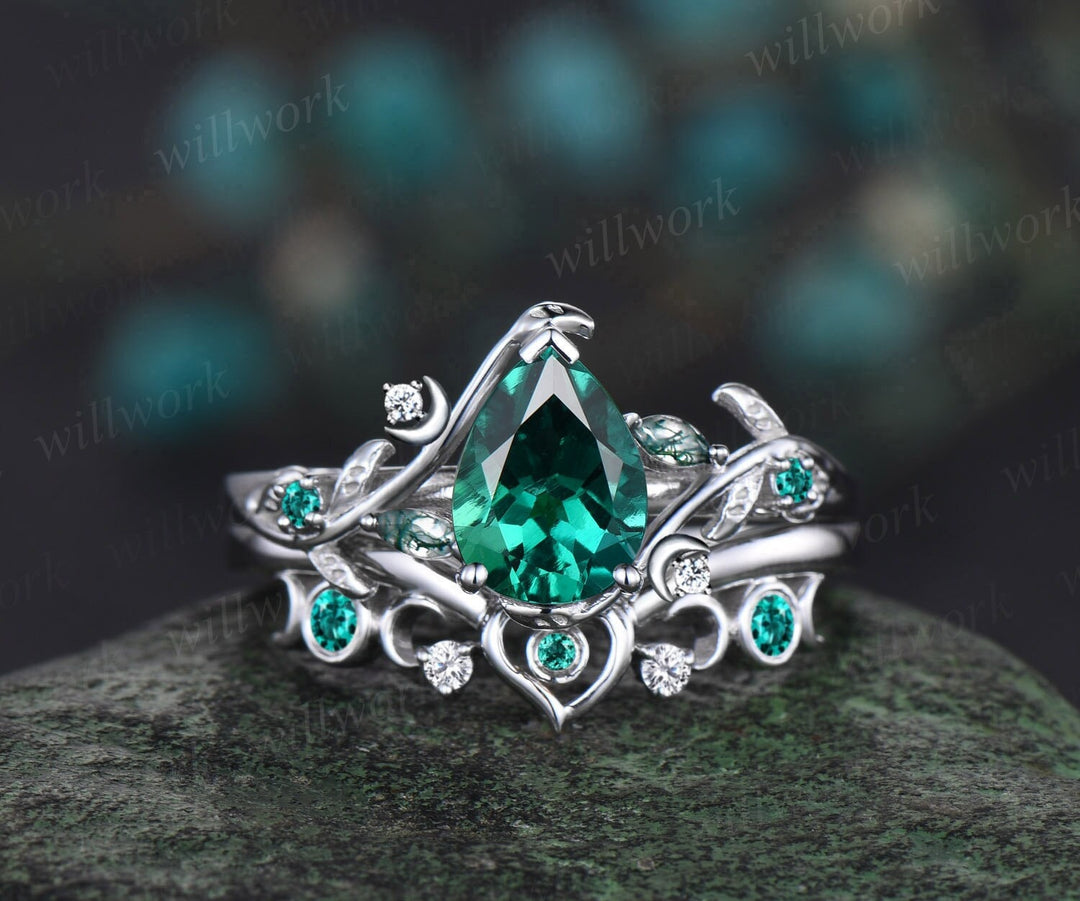
How To Compare a Lab-Created Emerald to a Natural Emerald
Identifying the distinction between a lab-created and a natural emerald can be attempted by examining the gemstone's color. Nonetheless, this approach may not always yield conclusive results due to the potential for color variation in both lab-grown and natural emeralds. Another method involves assessing the gemstone's clarity.
Typically, lab-created emeralds exhibit fewer inclusions, translating to lesser blemishes or extraneous materials, compared to their natural counterparts. However, this criterion is not infallible, as variations in clarity can occur within both types of emeralds.
The most reliable method for differentiating between a natural and a lab-created emerald is to seek the expertise of a certified gemologist. A professional evaluation by such an expert can provide a definitive identification of the gemstone's origin.
Why Should you Go with Lab-grown Emeralds?
Opting for a lab-grown emerald presents several advantages over choosing a mined gemstone.
1. Affordability is a key factor. Lab-grown emeralds offer the same aesthetic appeal as mined emeralds but at a considerably lower cost. This affordability allows for the acquisition of similar quality and appearance without the substantial financial investment required for natural stones.
2. Ethical considerations also play a significant role. Lab-grown emeralds are conflict-free, meaning they are not extracted from regions plagued by civil unrest or conflict. This aspect is increasingly important for many individuals when selecting their gemstones, as it ensures ethical sourcing.
3. Quality and purity assurance is another benefit of lab-grown emeralds. Being cultivated in a controlled environment, these gemstones are guaranteed to have consistent quality and lack the impurities often found in naturally mined stones. The unpredictability of quality in mined stones can lead to variations in clarity and the presence of unwanted impurities.
For these reasons, lab-grown emeralds stand out as an excellent choice for those seeking a gemstone that is not only beautiful and high-quality but also ethically sourced and economically accessible.
How to Keep Lab-Grown Emerald Jewelry in Good Condition
Lab-created emeralds are not only aesthetically pleasing but also practical for everyday wear. All emeralds possess a hardness rating of 7.5 to 8 on the Mohs scale, with the exception of natural emeralds containing substantial inclusions that render them more delicate. The controlled production process of lab-grown emeralds minimizes these inclusions, resulting in enhanced durability.
For at-home cleaning of emerald jewelry, a soft toothbrush and mild soap can be effective, especially for removing dust accumulation behind the stone. Nonetheless, it is advisable to have jewelry professionally cleaned for optimal care. Lab-grown emeralds are robust enough to withstand cleaning in an ultrasonic cleaner by a skilled jeweler.
It is important to avoid exposing both lab-grown and mined emeralds to abrasive substances or harsh chemicals. Such materials can irreversibly damage the surface of the stone or cause scratches, compromising its integrity and appearance.
Conclusion
The allure of natural emeralds is undeniable, yet their scarcity and high cost can be prohibitive. However, for those who find natural emeralds beyond their budget, lab-created emeralds present a viable and appealing alternative. These synthetic stones are not only chemically identical to natural emeralds but also come at a more accessible price point. Furthermore, lab-created emeralds exhibit enhanced durability compared to natural emeralds, as they are less prone to wear and tear, thus ensuring a longer lifespan.
Whether the purpose is an engagement ring or a distinctive piece of fashion jewelry, lab-created emeralds serve as an excellent choice, offering both beauty and affordability.




